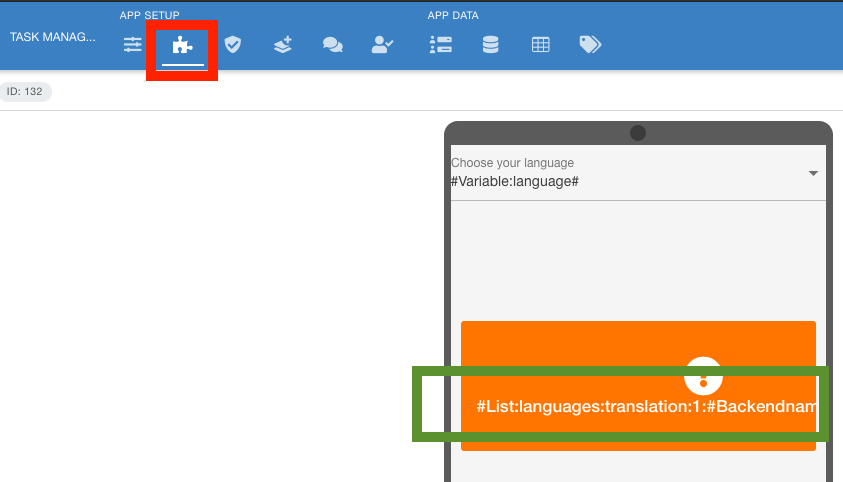...
#Object:id# - object unique ID
#Object:PIN# - login PIN if PIN is set in user access settings
#Object:Phone# - object phone number
#Object:Email# - object email
#Object:CreateDate# - object creation date
#Object:LoginUrl# and #Object:InviteUrl# - personal short link to enter the app on behalf of the object. #Object:InviteUrl# is used for app distribution to new users
#Object:Enabled# - object Status, if 0 - the object will not be able to access the app (requires to make settings in Enabled column in Objects)
#Object:LastLogin# - last date the app was accessed by the object
#Object:InviteStatus# - status of an invite sent to the object
#Object:Timezone# - current time zone
#Object:AutomaticalTimezone# - set automatic time zone, can be ON=1 or OFF=0
#Object:LastModified# - last date when object's data was changed
#Object:*anyColumnName*#anyColumnName# - reference to any custom column created in Objects
#Object:FacebookChannel# - FB bot enabled=1, not enabeld=0
#Object:TelegramChannel# - Telegram bot enabled=1, not enabled=0
#Object:ViberChannel# - Viber bot enabled=1, not enabled=0
#Object:VKChannel# - VKbot enabled=1, not enabled=0
#Object:NotifyPush# - Chrome push enabled =1, not enabled =0
#Object:NotifyEmail# - Email push enabled =1, not enabled =0
#Object:NotifySMS# - SMS push enabled =1, not enabled =0
#Object:*anyColumnName123*#anyColumnName123# - reference to any custom column created in Objects.
...
#Event: id# - Event id
#Event:Value:*EventFiledName*# EventFiledName# -data from the specified field name in Event Value column
#Event:ActionName# - event action name.
...
#LastEvent:id# - Last Event id
#LastEvent:Value:*EventFiledName*#EventFiledName# - data from specified field in Event Value column
#LastEvent:ActionName# - Last Event action name.
...
LISTS OF TABLES (CUSTOM DATA TABLES)
More info coming soonThe FULL general form of the hashtag to call on custom tables is the following:
#List:list_name:table_name:N:column_name#
Where: "List" is the initiation line telling the system to look into lists of tables data. "list_name" is the custom name you give to your custom list of tables "table_name" is your custom name of the needed table within the list "N" is the ID of the ROW within the table "column_name" is the custom name of a column |
|---|
The full form returns to the exact data cell.
The List's hashtags can be used in it's partial form to pull in arrays of data from the table:
- #List:list_name:table_name# - returns the table in full, and is often used with ONE column tables
- #List:list_name:table_name:N# - returns the specified ROW from the table, with all the columns
You can also use a hashtag WITHIN a hashtag to make more dynamic data calls, as shown in the example below, taken from the Task Manager sample app (located in your account):
You can see that the hashtag used in the Constructor (marked Red) of the app, has this form (marked Green) -
Now, look into this hashtag - #List:languages:translation:3:#Backendname:Language##, open the Lists of Tables (marked Red), click down to Languages > Translations. You can see that the first part (in bold) of the hashtag fully repeats the route to the table.
Now - look at the second part of the hashtag #List:languages:translation:3:#Backendname:Language## ( in bold again). Each row stores how each piece of text in app is in every language. Then a column is requested using another hashtag, from a backend element's name, where use sets his own language. Note that in this case you user a double ## at the end to "close" both hashtags, just as with spreadsheet formulas.
CURRENT URL - ROUTE
Current page route (URL) will pull into the application any information located in the incoming/open/current URL. This is often used to pass data between applications without any complex integration.
...

